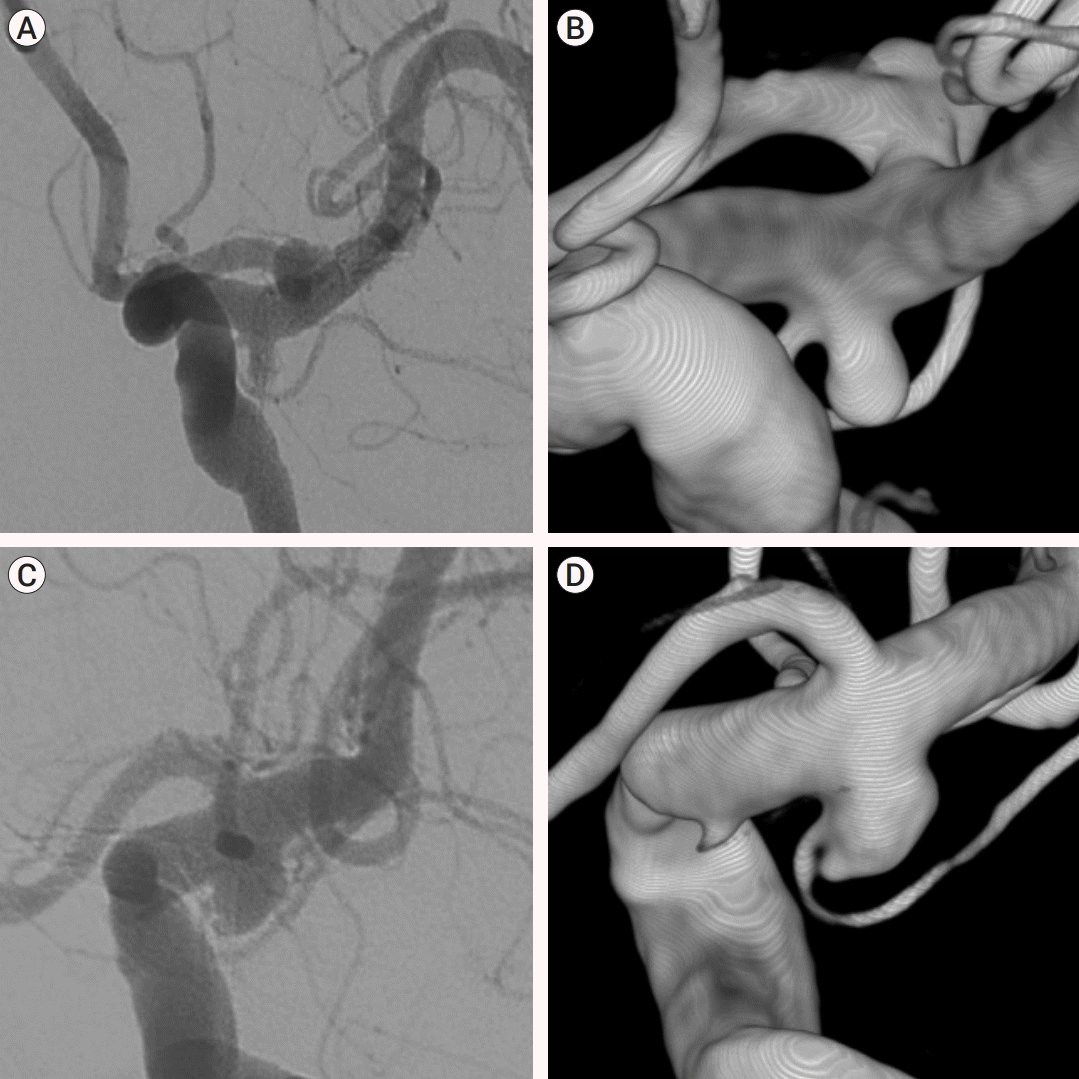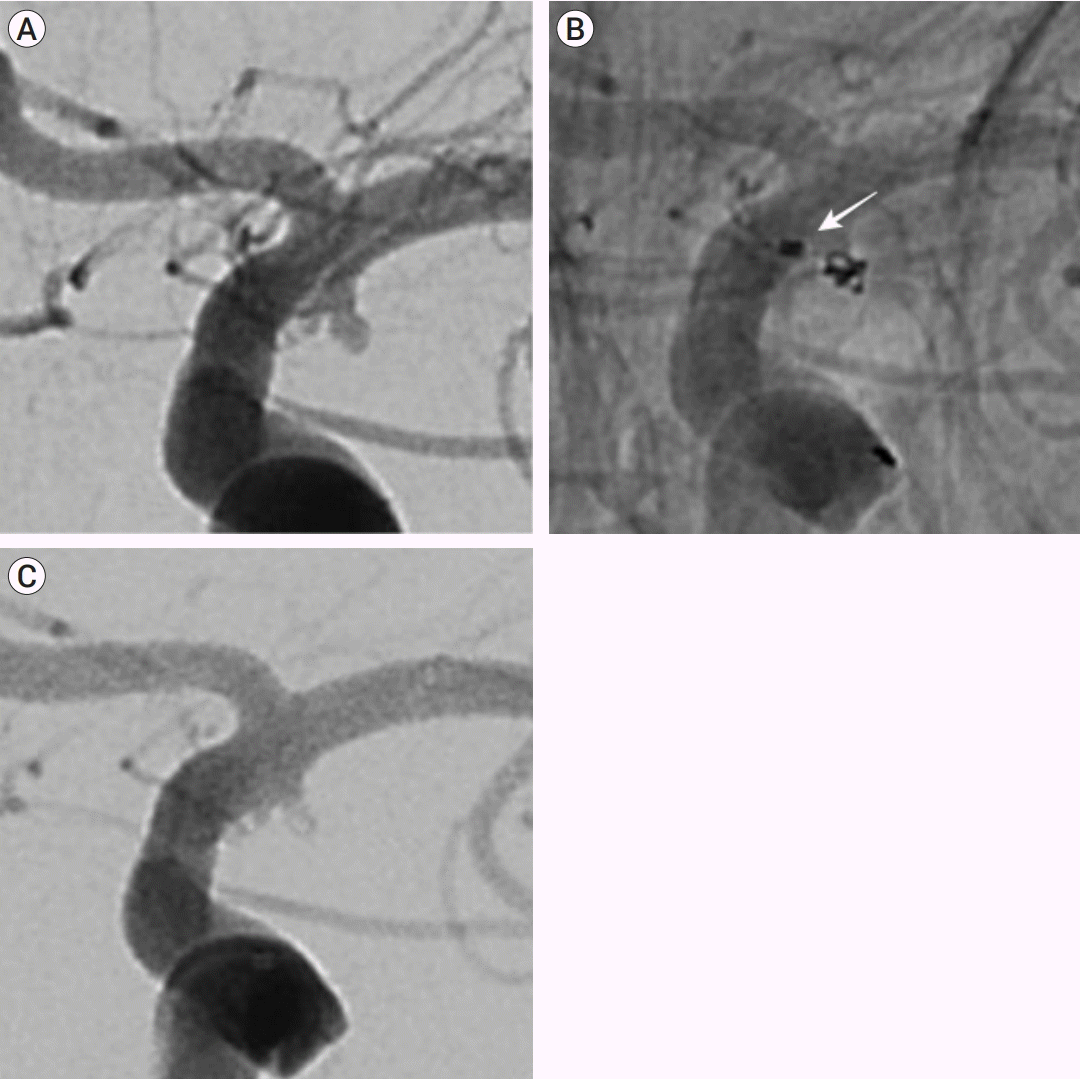1. Aoki T, Hirohata M, Noguchi K, Komaki S, Orito K, Morioka M. Comparative outcome analysis of anterior choroidal artery aneurysms treated with endovascular coiling or surgical clipping. Surg Neurol Int. 2016; Aug. 7(Suppl 18):S504–9.

2. Bhogal P, Ganslandt O, Bäzner H, Henkes H, Aguilar Perez M. Treatment of unruptured, saccular, anterior choroidal artery aneurysms with flow diversion: a single centre experience. Clin Neuroradiol. 2019; Sep. 29(3):459–65.

3. Bohnstedt BN, Kemp WJ 3rd, Li Y, Payner TD, Horner TG, Leipzig TJ, et al. Surgical treatment of 127 anterior choroidal artery aneurysms: a cohort study of resultant ischemic complications. Neurosurgery. 2013; Dec. 73(6):933–9. discussion939.

4. Byoun HS, Oh CW, Kwon OK, Lee SU, Ban SP, Kim SH, et al. Intraoperative neuromonitoring during microsurgical clipping for unruptured anterior choroidal artery aneurysm. Clin Neurol Neurosurg. 2019; Nov. 186:105503.

5. D’Urso PI, Lanzino G, Cloft HJ, Kallmes DF. Flow diversion for intracranial aneurysms: a review. Stroke. 2011; Aug. 42(8):2363–8.
6. Drake CG, Vanderlinden RG, Amacher AL. Carotid-choroidal aneurysms. J Neurosurg. 1968; Jul. 29(1):32–6.

7. Friedman JA, Pichelmann MA, Piepgras DG, Atkinson JL, Maher CO, Meyer FB, et al. Ischemic complications of surgery for anterior choroidal artery aneurysms. J Neurosurg. 2001; Apr. 94(4):565–72.

8. Grunwald IQ, Papanagiotou P, Struffert T, Politi M, Krick C, Gül G, et al. Recanalization after endovascular treatment of intracerebral aneurysms. Neuroradiology. 2007; Jan. 49(1):41–7.

9. Kang HS, Kwon BJ, Kwon OK, Jung C, Kim JE, Oh CW, et al. Endovascular coil embolization of anterior choroidal artery aneurysms. Clinical article. J Neurosurg. 2009; Nov. 111(5):963–9.
10. Kim BM, Kim DI, Shin YS, Chung EC, Kim DJ, Suh SH, et al. Clinical outcome and ischemic complication after treatment of anterior choroidal artery aneurysm: comparison between surgical clipping and endovascular coiling. AJNR Am J Neuroradiol. 2008; Feb. 29(2):286–90.

11. Kim BM, Kim DI, Shin YS, Chung EC, Kim DJ, Suh SH, et al. Endovascular coil embolization for anterior choroidal artery aneurysms. Neuroradiology. 2008; Mar. 50(3):251–7.

12. Nguyen TN, Hoh BL, Amin-Hanjani S, Pryor JC, Ogilvy CS. Comparison of ruptured vs unruptured aneurysms in recanalization after coil embolization. Surg Neurol. 2007; Jul. 68(1):19–23.

13. Park YK, Bae HJ, Cho DY, Choi JH, Kim BS, Shin YS. Risk factors for recurrence and retreatment after endovascular treatment of intracranial saccular aneurysm larger than 8 mm. Acta Neurochir (Wien). 2019; May. 161(5):939–46.
14. Piotin M, Mounayer C, Spelle L, Williams MT, Moret J. Endovascular treatment of anterior choroidal artery aneurysms. AJNR Am J Neuroradiol. 2004; Feb. 25(2):314–8.
15. Raymond J, Guilbert F, Weill A, Georganos SA, Juravsky L, Lambert A, et al. Long-term angiographic recurrences after selective endovascular treatment of aneurysms with detachable coils. Stroke. 2003; Jun. 34(6):1398–403.

16. Srinivasan VM, Ghali MGZ, Cherian J, Mokin M, Puri AS, Grandhi R, et al. Flow diversion for anterior choroidal artery (AChA) aneurysms: a multi-institutional experience. J Neurointerv Surg. 2018; Jul. 10(7):634–7.

17. Viale GL, Pau A. Carotid-choroidal aneurysms: remarks on surgical treatment and outcome. Surg Neurol. 1979; Feb. 11(2):141–5.






 PDF
PDF Citation
Citation Print
Print



 XML Download
XML Download